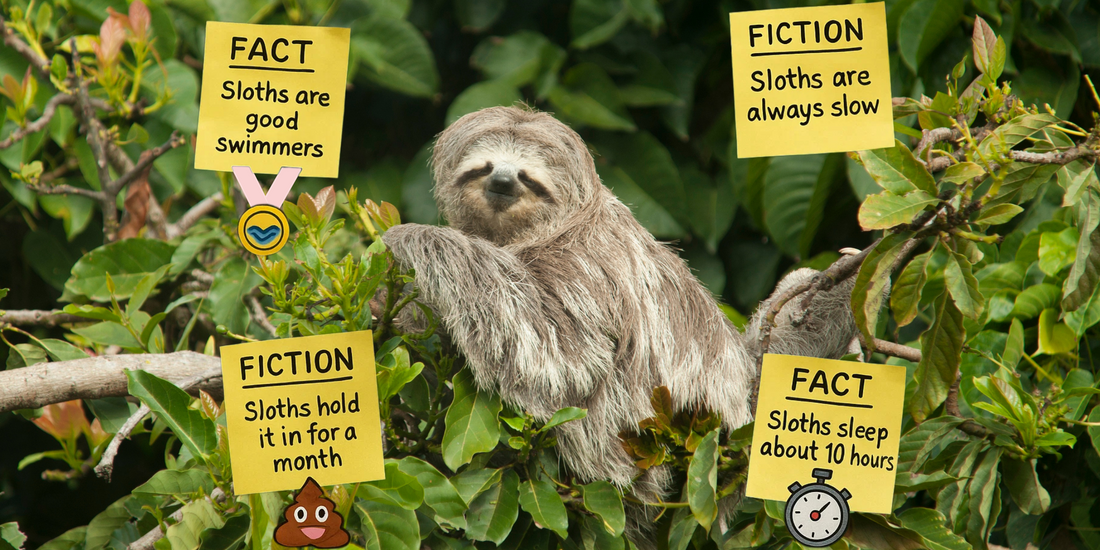
Sloth Myths Busted: What’s Real (and What’s Ridiculously Wrong)
Share
Sloths have become internet legends—slow, sleepy, and seemingly harmless. At Surreal Sloths, we adore them, but we also honor the science behind their quirks. Time to debunk some widespread myths with facts you can trust:
Myth #1: Sloths are “lazy.”
Busted! Sloths aren’t lazy—they’re ultra energy-efficient. With metabolic rates nearly 60% lower than similar-sized mammals, they’ve evolved to conserve every calorie in their nutrient-poor leaf diet.
Real Fact: Their slow pace and low metabolism aren’t laziness—they’re survival strategies. (Source)
Myth #2: Sloths are defenseless.
Mostly busted. They may not fight, but sloths boast 3–4 in (7–10 cm) claws and enough grip strength to lift their entire body—twice that of humans.
Real Fact: Those long claws aren’t just for hanging—they’re defensive tools. (Source)
Myth #3: Sloths poop from the trees.
Busted!... And weird. Three-toed sloths climb down weekly to defecate, losing up to one-third of their body weight in the process—a risky, energy-costly behavior with unclear purpose.
Real Fact: It's a dangerous ritual—scientists are still debating why they do it. (Source)
Myth #4: All sloths are the same.
Busted! There are six distinct species—two two-toed and four three-toed—with differences in diet, habitat, neck vertebrae, and more.
Real Fact: Three‑toed sloths can rotate their heads ~270° thanks to extra neck bones. (Source)
Myth #5: Sloths are too slow to swim.
Completely busted. Sloths swim 3× faster in water and can hold their breath for up to 40 minutes by slowing their heart rate.
Real Fact: They’re surprisingly agile swimmers, not just tree loungers. (Source)
Myth #6: Sloths are safe as pets or selfie props.
Hard busted. Wild sloths suffer extreme stress and frequent injuries when handled by humans. Illegal wildlife tourism often damages their health and lifespan.
Real Fact: Sloth selfies often involve animals taken from the wild, harming both individual creatures and species conservation. (Source)
Myth #7: Sloths aren’t affected by environmental change.
Majorly busted. They depend on stable rainforest climates. But slow metabolisms and narrow temperature comfort zones mean that even slight habitat changes can devastate them. The pygmy three-toed sloth is critically endangered.
Real Fact: Their survival is tied directly to climate and healthy ecosystems. (Source)
Why This Matters
Sloths are more than meme-worthy icons—they’re vital rainforest inhabitants with unique biology and urgent conservation needs. Understanding them isn’t just fun—it’s essential for protecting their future.

